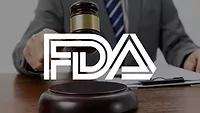FDA Deputy Commissioner Details how FY 2025 Funds Will be Spent on Human Foods Priorities

In an April 5, 2024 webinar hosted by the Alliance for a Stronger FDA, James (Jim) Jones, Deputy Commissioner for Human Foods at the U.S. Food and Drug Administration (FDA), elaborated upon the agency’s recent request for $7.2 billion in funding as part of the Presidential budget for fiscal year (FY) 2025, and how portions of those funds will be allocated to meeting Human Foods Program goals.
According to Mr. Jones, although the FY 2025 budget request was mostly finalized prior to his joining FDA and the proposed reorganization of the agency’s Human Foods Program has not yet been implemented, he currently has authority over the Human Foods budget, regardless of which departments receive the money within the current FDA structure. He also shared that the agency fully expects to have its new, unified Human Foods Program up-and-running before FY 2026, and therefore the FY 2026 budget request will be drafted with the new structure in mind.
In the FY 2025 budget, FDA sought to address budgetary disparities with a request of $7.2 billion—$153 million over the FY 2024 budget—the agency's largest request ever. According to Mr. Jones, "to oversee 80 percent of the nation's food supply in addition to the safety and labeling of dietary supplements without meaningful user fees, [FDA has] long faced a gap between what is needed and what is available, and each year that gap grows larger. For context, the U.S. Department of Agriculture (USDA) has approximately the same budget [as FDA] for their oversight of approximately 20 percent of the U.S. food supply."
For Human Foods Program priorities, the agency asked for $15 million more than what was approved for FY 2024, to be allocated across three pillars: $6.5 million for microbiological safety, $4.5 million for chemical safety, and $4 million for nutrition. Mr. Jones went into detail about specific initiatives that will be financed in these three areas through the FY 2025 budgetary funds, and explained that decisions about allocating this limited $15 million budget will be informed by a dedicated surveillance and risk prioritization office, which will use all available data to help determine how every dollar spent on Human Foods Program priorities can deliver the greatest public health returns.
Microbiological and Chemical Safety Priorities
Regarding microbiological safety, the money will be used to effectively implement Food Safety Modernization Act (FSMA) requirements to achieve a reduction in the rates of foodborne illness in the U.S. More specifically, FDA’s Human Foods will use FY 2025 funds to finalize and help industry comply with the Produce Safety Rule Agricultural Water Rule, as well as to guide industry compliance with the Food Traceability Final Rule. These efforts will include investments into training and outreach; developing support for new provisions such as technology tools, improved information technology (IT) systems, and guidance materials; educational visits and on-farm readiness reviews for the Agricultural Water Rule; and hiring consumer safety officers to ensure compliance with the Food Traceability Final Rule. Mr. Jones also mentioned several other work plans to advance microbiological food safety, the prioritization and execution of which will be dependent on the approved FY 2025 budget: deepening collaborations with government/regulatory partners and academia, expanding the availability of agricultural water sanitizers, targeting Salmonella and Escherichia coli contamination, expanding environmental sampling efforts, strengthening guidance materials for root-cause analyses, working with international partners to establish traceability mechanisms, and integrating complaints and other data to identify emerging threats.
Mr. Jones expressed that FDA’s food chemical safety priorities are perhaps the most ambitious of the Human Foods Program’s three pillars of focus, with only $4.5 million to spend despite aiming to significantly expand the scope of work, mostly related to postmarket chemical reassessment. With FY 2025 funds, FDA hopes to: gather a team of experts to assimilate all available data on prioritized substances for reassessment; surveil academic publications and social media/consumer channels to identify substances of concern; increase industry compliance with the requirements of “Generally Recognized as Safe” (GRAS) self-determination by setting up systems to identify when new GRAS ingredients are being used without prior notification to FDA, so that the agency can engage firms and ensure they can provide documentation supporting their GRAS determination; and provide information to the public about FDA’s approach to food chemical safety and how it protects public health. Alongside the FY 2025 budget request, FDA also requested additional authorities to ensure food chemical safety, such as establishing binding contamination limits for toxic heavy metals in foods for babies and young children, and mandating manufacturer testing for such contaminants with recordkeeping requirements.
Looking for quick answers on food safety topics?
Try Ask FSM, our new smart AI search tool.
Ask FSM →
Cross-Cutting Agency Priorities
An additional $45 million was requested as part of the FY 2025 budget for cross-cutting agency infrastructure, such as pay inflation, data modernization, ensuring the continuity of the food supply chain, and keeping up with the data needs of laboratories and trading points of entry into the U.S. Of this $45 million, $1 million will be spent within a new Office of Critical Foods, the purpose of which is to monitor and ensure an adequate national supply of infant formula and medical foods. An example of how this new Office of Critical Foods will deliver on its charge is by developing and utilizing an automated IT system that is designed to eliminate much of the manual labor involved with monitoring the supply chain for potential shortages of critical foods. Additionally, FDA has requested authorities to require infant formula manufacturers to keep risk management plans, and to report certain information to the agency.
Improving State-FDA Collaboration on a Limited Budget
Aside from the $15 million intended for FDA’s Human Foods Program to allocate across microbiological safety, chemical safety, and nutrition, Mr. Jones underlined a significant budgetary challenge at the agency—the shrinking federal funds FDA has available to give to state public health agencies for frontline inspections and other food safety activities. Over the past five years, FDA has given states approximately $119 million annually for their food safety initiatives—$36 million more than the agency actually accounted for in its yearly budgets ($83 million), because FDA was pulling from “extra money” in the budget that was otherwise going unused. FY 2025 will be the first year in five years that the states will not receive this $36 million in extra funding.
However, Mr. Jones shared his vision for a future in which FDA and state, local, tribal, and territorial (SLTT) have a seamless working relationship that enables all parties to save resources by combining efforts and not duplicating work. At present, the majority of state-FDA collaboration related to foods is conducted through the Office of Regulatory Affairs (ORA), as most of this work between FDA and the states centers around inspections. However, as the unified Human Foods Program is implemented and relevant functions of ORA move to the Human Foods Program, so will the state-FDA collaboration functions regarding human foods. Mr. Jones will work toward delivering a reality in which FDA and SLTT work together “as an enterprise” to ensure food safety, and he shared that the agency and SLTTs are already beginning to implement an aligned, enterprise-wide training approach for federal and SLTT inspection personnel.









